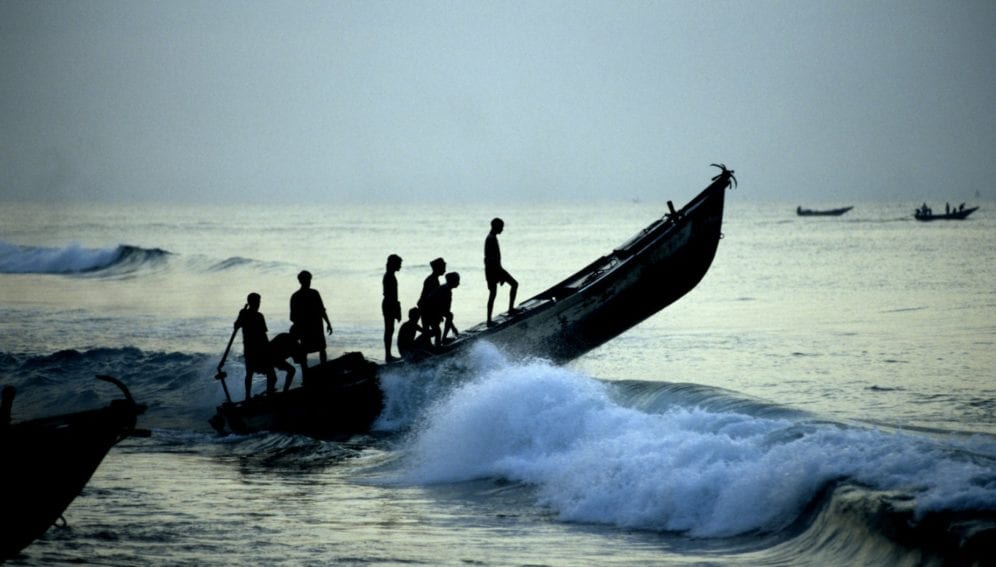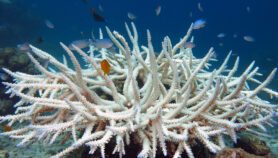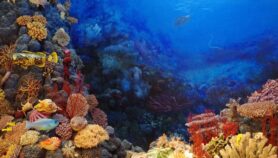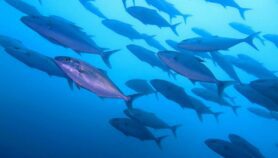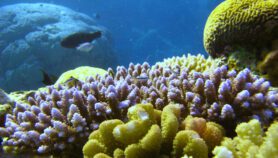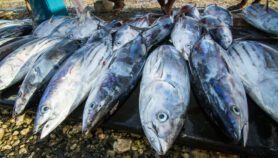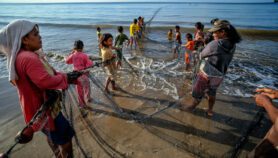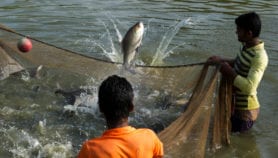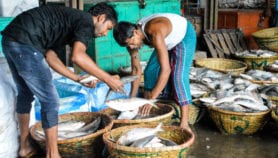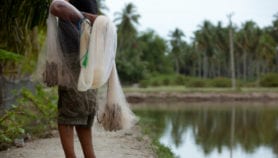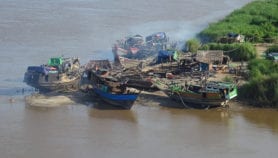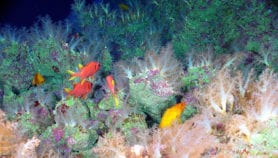Send to a friend
The details you provide on this page will not be used to send unsolicited email, and will not be sold to a 3rd party. See privacy policy.
Maritime countries in South Asia can resort to science and diplomacy to resolve their international fisheries disputes, says Nalaka Gunawardene.
At the same time, greater regional cooperation can help countries protect their oceanic resources from pirate fishing by vessels coming from outside the region.
The big challenge is to ensure that both big and small fishing vessels respect the United Nations Law of the Sea as well as the laws of nature.
Fish is a renewable resource — but only if harvesting is done allowing sufficient time for stocks to renew. This timeless fisher wisdom is increasingly ignored by mechanically equipped fishing fleets.
Pirate fishing, known technically as illegal, unreported and unregulated (IUU) fishing, has become a huge problem worldwide. It threatens the future sustainability of fish stocks and the whole industry by extracting too much, too fast.
One estimate says IUU fishing costs the industry as much as USD23.5 billion per year and accounts for up to 20 per cent of global wild marine catch. [1]
Better management of marine fish stocks is vital for Indian Ocean rim countries. Over-harvesting and rampant waste of fish catches already threaten stocks of key fish species. At stake are the jobs of tens of thousands of fishermen, and the nutrition of hundreds of millions of people in these countries who rely principally on fish for protein.
Indo-Lanka Dispute
Probably the best known fisheries dispute in South Asia involves Indian and Lankan fishers trespassing into the other country's territorial seas.
The two countries keep arresting each other’s vessels crossing over to their side. This scramble for resources has become a thorny political and diplomatic problem.
The dispute dates back to the 1970s, when both countries agreed on a maritime boundary. But for about a quarter century during the Lankan civil war, Indian fishers disregarded the boundary and operated freely in Lankan waters.
After the war ended in 2009, that situation changed. Lankan fishers gradually returned to the northern seas – only to find their fishing grounds heavily encroached. Negotiations and navy patrolling have not yet resolved the crisis. [2]
Lankan Parliamentarian Vijitha Herath told a recent Colombo seminar that Sri Lanka was losing USD 40 million worth of sea catch every month to Indian fishermen. He claimed that some 50,000 families in northern Sri Lanka, who depend on marine fishing, suffer as a result. [3]
Herman Kumara, a Lankan fisher rights activist, has blamed the Indian trawlers for catching fish excessively and also destroying the smaller nets and boats of Lankan fishers.
“We have long used our waters in a sustainable manner but these [Indian] trawlers do not follow this model,” he told India’s Down to Earth magazine in 2013. [2]
Scientists confirm that stocks of some economically valuable fish species are threatened. Among these is yellowfin tuna that makes up around 40 per cent of Sri Lanka’s total fish catch.
While attempts to negotiate better regulation have made slow progress, the situation has worsened. The Sunday Times newspaper in Sri Lanka reported in mid February how Indian fishermen entering the Sri Lankan waters in the Palk Strait between the two countries now use of even more damaging fishing practices. One of them is “pair trawling” where two steel hull boats scrape the sea bottom. [4]
Bigger problem
The Indo-Lanka stand-off is not the only fisheries related dispute in the seas around South Asia.
Indian and Pakistani fishers regularly stray into each other’s territorial waters in the Arabian Sea off the coast of Gujarat. Disputes also arise between fishers of India and Bangladesh in the Bay of Bengal.
Meanwhile, Sri Lanka’s multi-day fishing craft have been implicated for highly damaging or illegal fishing practices in the Maldives. For example, in November 2012, Greenpeace recorded illegal fishing activities by two Lankan tuna and shark boats in the Maldives Exclusive Economic Zone (EEZ) and the adjacent high seas.
International waters of the Indian Ocean are also frequented by trawlers from countries such as France, Spain, China, Taiwan, Japan and South Korea.
The Maldives, where fishing is the second largest industry and the main source of employment, has long complained about mass harvesting of fish stocks by foreign vessels just outside its EEZ. Such vessels use Fish Aggregation Devices (FADs) as well as purse seining, an indiscriminate fishing method that leads to a large volume of by-catch.
As Greenpeace International oceans campaigner Sari Tolvanen said in 2012: “Illegal fishing is a massive problem in the Indian Ocean. It is stealing from coastal communities and plunders marine life such as sharks. Boats that repeatedly fail to comply with the rules must be stopped. Our oceans need fewer fishing vessels that are properly controlled if we are to reverse the current overfishing crisis." [5]
Monitoring needed
It is technology adoption that has vastly enhanced fishers’ capabilities. Now, regulators must urgently upgrade their own tech tools to keep a sharp eye on local and foreign fishers.
India already tracks vessels longer than 20 metres in length. In 2015, the government decided to install Automatic Information System (AIS) transponders for tracking smaller boats too. These will help track boats up to 50 kilometres from the coast. Eventually, a space-based tracking system is to be adopted for all vessels. [6]
Policing the open seas is fraught with legal and logistical difficulties. Satellites, which grow more versatile by the year, now allow independent surveillance of vessels at sea.
One example is MarInt that uses commercial satellites to continuously monitor the movements of all seagoing vessels. Using algorithms, MarInt can analyze the behaviour of vessels in real time, and identify those that behave suspiciously (e.g. zigzag movement indicating trawling). [7]
Already, intelligence agencies and Customs authorities rely on such data analysis. Fisheries regulators must sign up.
A website called Global Fishing Watch, launched in November 2014, takes surveillance further. This partnership between SkyTruth, Google and the nonprofit group Oceana, is designed to show all the trackable ocean fishing activity using the data from their AIS transponders.
It allows anyone with an Internet connection to monitor when and where commercial fishing is happening around the globe. [8]
The service, currently in prototype stage, will eventually visualise all the global fishing fleets in space and time. When over four million vessels can be tracked and seen online, marine fishing need never again be out of sight or out of public mind.
Increased monitoring needs to be backed up by better law enforcement and greater regional cooperation.
The Indian Ocean Tuna Commission (IOTC), an inter-governmental body set up in 1996, regulates the catch of 16 tuna and tuna-like fish species. It promotes cooperation among member states to ensure the conservation and wise use of fish stocks. However, some researchers and activists claim IOTC is not doing enough. [9]
“The Indian Ocean is one of the least known and most unregulated oceans in the world,” Barbara Block, a leading US marine biologist at Stanford University, told me in an interview three years ago. “It’s like the Wild West: people are taking whatever resources as they wish!”
That status quo must end fast, before it is too late.
Nalaka Gunawardene is a Colombo-based science writer, blogger and development communication consultant. He tweets from @NalakaG
References
[1] Ending Illegal Fishing Project. The Pew Charitable Trusts.
[2] India fishing in troubled Sri Lankan waters. Down to Earth magazine. 13 November 2013.
[3] Gone with the trawlers. Daily Mirror, Sri Lanka. 8 February 2016.
[4] Palk Strait may end up as a dead sea. The Sunday Times, Sri Lanka. 21 February 2016.
[5] Greenpeace finds illegal fishing vessels, urges UK to enforce Chagos marine reserve. Greenpeace press release. 24 October 2012.
[6] Government to Install Tracking Devices in Fishing Boats. New Indian Express. 8 February 2015.
[7] Can technology end pirate fishing? By Barton Seaver. National Geographic Voices. 26 August 2013.
[8] Global Fishing Watch website.
[9] Indian Ocean Tuna Commission website.
[10] Indian Ocean: Wild West of the 21st Century? By Nalaka Gunawardene. Ceylon Today. 12 May 2013.


